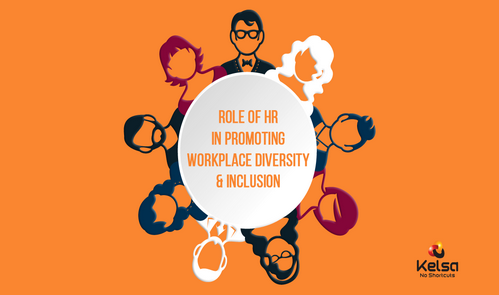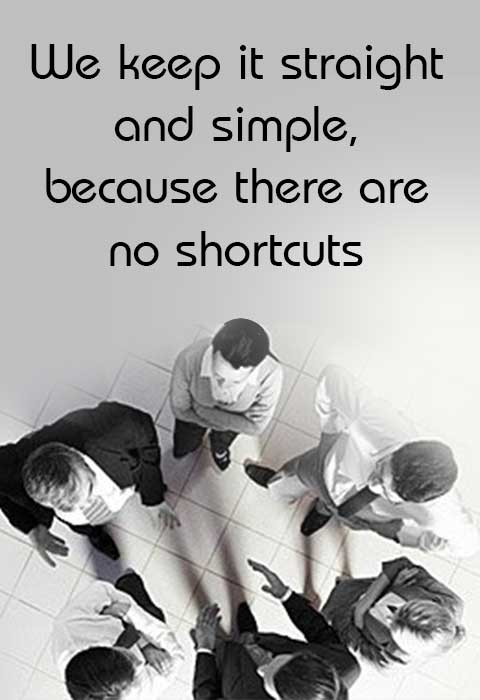Workplace Diversity – Success Strategies for HR Leaders

Diversity and inclusion practices are fast emerging as a key priority across organisations today, as many become aware of the importance of these measures and the value they bring in driving organisational goals forward.
Organisations that have embedded diversity practices across all aspects of their business are likely to derive significant benefits – including greater degree of innovative thinking, creative solution approaches to improve product and service performance, favourable employer perceptions and improved ability to retain talent. Not surprisingly, HR insights and analytics experts such as Josh Bersin are observing that organisations with embedded diversity and inclusion across all aspects of their business could “statistically outperform their peers.”
Implementing diversity and inclusion at the workplace
Presently, diversity initiatives are well embedded across 75% of Fortune 1000 companies and enabling them to create workplace environments that accept, appreciate and value differences between people such as age, ethnicity, gender, race, religion, disability, sexual orientation, education, skill sets, knowledge and experiential backgrounds.
At its core, workplace diversity facilitates connect and enables powerful ideas – and, when executed well, delivers significant competitive advantage to organisations. Here, we discuss practices and strategies that are effective in encouraging workplace diversity, steps that HR leaders can initiate, and the pivotal role they play in ensuring effective implementation.
Define workplace diversity
First things first, HR leaders need to understand that diversity is perceived differently among employees of different generations. Research findings by Deloitte suggest that diversity may not mean the same thing to millennials, GenXers and Boomers.
Millenials see it as the coming together of different backgrounds, experiences, and perspectives, and essentially an enabler for innovation. GenXers and Boomers on the other hand, value diversity for the equal and fair representation of demographics (race, age, gender, ethnicity) and improved sense of support and understanding it can promote within organisations. They do not necessarily consider diversity issues in context to business results.
This means that leaders would need to understand the organisation’s diversity objectives, as well as the spread and representation of employee generations, to devise a cohesive strategy that is relevant to the workplace.
Inclusion is important
Workplace diversity can be meaningless without adequate measures to ensure inclusion. Inclusion ensures organisational environments that are collaborative, supportive, and respectful of differences, and drives increased participation and contribution from across all groups of employees.
So, to ensure effective workplace diversity, HR leaders would also need to identify specific areas where they can demonstrate inclusion – for instance, hiring, communications and design of team structures.
Bring together a Diversity and Inclusion Committee
A Diversity and Inclusion committee could be created to drive better workplace diversity practices and monitor the quality of implementation. Needless to mention, the committee would ideally comprise members from across the organisation’s demographics and also include external advisors who have expertise in the area.
The committee can lay down guidelines for diversity management, define behavioural standards, drive accountability for results and ensure resolution of any conflicts or issues. In addition, the committee can also be tasked with review of key metrics such as diversity in hiring.
Redefine talent acquisition approaches
Talent acquisition forms an important channel for organisations to “walk the talk” on their diversity practices. It also offers a visible platform that can be used to engage across communities of prospective employees, vendors and other institutions and reinforce beliefs and messages on workplace diversity.
In addition, creating opportunities for candidates to interact with employees in the organisation and experience diversity in practice ensures favourable employer perception and improves access to high quality talent.
Foster diversity within teams
Diversity within teams sparks innovative thinking and ensures improved approaches to design and delivery of products and services.
It is therefore essential that HR leaders work with line managers to ensure teams comprise employees from across different backgrounds, and drive skills that promote diversity thinking. This would include delivering training to enable teamwork and collaboration, creativity and innovation, flexibility, responsiveness, and agility as well as collaborative thinking and conflict resolution.
Further, employees at all levels would need to be sensitised on handling issues such as unconscious bias and upholding appropriate behavioural standards.
Engage across communication channels
A robust communication system is vital to ensuring momentum in workplace diversity strategies. Together with the communications team, HR leaders can formalise multiple communication formats where diversity messages are reinforced.
These initiatives can be planned across both internal and external communication platforms, and directed to enable delivery across several areas including building a robust talent pipeline, sensitising employees on cross-generational issues, and driving innovative and solution-based thinking.
In addition, workplace diversity ambassadors can be identified to engage and interact with employees and stakeholder groups across social media and other online-based platforms.
Celebrate and reward workplace diversity
Finally, celebrating and rewarding diversity thinking and driving it as part of the everyday workplace experience helps reinforce favourable messages and improves accountability for diversity practices.
While celebrating diversity at the workplace, HR leaders are able to drive leadership commitment and encourage diversity representation at all levels of the organisation. Further, creating and sharing visible scorecards that measure diversity representation in areas such as recruiting, career progression, special projects and initiatives, as well as supplier relationships, help to reinforce positive messages on workplace diversity and inclusion.
Workplace Diversity – Success Strategies for HR Leaders

Diversity and inclusion practices are fast emerging as a key priority across organisations today, as many become aware of the importance of these measures and the value they bring in driving organisational goals forward.
Organisations that have embedded diversity practices across all aspects of their business are likely to derive significant benefits – including greater degree of innovative thinking, creative solution approaches to improve product and service performance, favourable employer perceptions and improved ability to retain talent. Not surprisingly, HR insights and analytics experts such as Josh Bersin are observing that organisations with embedded diversity and inclusion across all aspects of their business could “statistically outperform their peers.”
Implementing diversity and inclusion at the workplace
Presently, diversity initiatives are well embedded across 75% of Fortune 1000 companies and enabling them to create workplace environments that accept, appreciate and value differences between people such as age, ethnicity, gender, race, religion, disability, sexual orientation, education, skill sets, knowledge and experiential backgrounds.
At its core, workplace diversity facilitates connect and enables powerful ideas – and, when executed well, delivers significant competitive advantage to organisations. Here, we discuss practices and strategies that are effective in encouraging workplace diversity, steps that HR leaders can initiate, and the pivotal role they play in ensuring effective implementation.
Define workplace diversity
First things first, HR leaders need to understand that diversity is perceived differently among employees of different generations. Research findings by Deloitte suggest that diversity may not mean the same thing to millennials, GenXers and Boomers.
Millenials see it as the coming together of different backgrounds, experiences, and perspectives, and essentially an enabler for innovation. GenXers and Boomers on the other hand, value diversity for the equal and fair representation of demographics (race, age, gender, ethnicity) and improved sense of support and understanding it can promote within organisations. They do not necessarily consider diversity issues in context to business results.
This means that leaders would need to understand the organisation’s diversity objectives, as well as the spread and representation of employee generations, to devise a cohesive strategy that is relevant to the workplace.
Inclusion is important
Workplace diversity can be meaningless without adequate measures to ensure inclusion. Inclusion ensures organisational environments that are collaborative, supportive, and respectful of differences, and drives increased participation and contribution from across all groups of employees.
So, to ensure effective workplace diversity, HR leaders would also need to identify specific areas where they can demonstrate inclusion – for instance, hiring, communications and design of team structures.
Bring together a Diversity and Inclusion Committee
A Diversity and Inclusion committee could be created to drive better workplace diversity practices and monitor the quality of implementation. Needless to mention, the committee would ideally comprise members from across the organisation’s demographics and also include external advisors who have expertise in the area.
The committee can lay down guidelines for diversity management, define behavioural standards, drive accountability for results and ensure resolution of any conflicts or issues. In addition, the committee can also be tasked with review of key metrics such as diversity in hiring.
Redefine talent acquisition approaches
Talent acquisition forms an important channel for organisations to “walk the talk” on their diversity practices. It also offers a visible platform that can be used to engage across communities of prospective employees, vendors and other institutions and reinforce beliefs and messages on workplace diversity.
In addition, creating opportunities for candidates to interact with employees in the organisation and experience diversity in practice ensures favourable employer perception and improves access to high quality talent.
Foster diversity within teams
Diversity within teams sparks innovative thinking and ensures improved approaches to design and delivery of products and services.
It is therefore essential that HR leaders work with line managers to ensure teams comprise employees from across different backgrounds, and drive skills that promote diversity thinking. This would include delivering training to enable teamwork and collaboration, creativity and innovation, flexibility, responsiveness, and agility as well as collaborative thinking and conflict resolution.
Further, employees at all levels would need to be sensitised on handling issues such as unconscious bias and upholding appropriate behavioural standards.
Engage across communication channels
A robust communication system is vital to ensuring momentum in workplace diversity strategies. Together with the communications team, HR leaders can formalise multiple communication formats where diversity messages are reinforced.
These initiatives can be planned across both internal and external communication platforms, and directed to enable delivery across several areas including building a robust talent pipeline, sensitising employees on cross-generational issues, and driving innovative and solution-based thinking.
In addition, workplace diversity ambassadors can be identified to engage and interact with employees and stakeholder groups across social media and other online-based platforms.
Celebrate and reward workplace diversity
Finally, celebrating and rewarding diversity thinking and driving it as part of the everyday workplace experience helps reinforce favourable messages and improves accountability for diversity practices.
While celebrating diversity at the workplace, HR leaders are able to drive leadership commitment and encourage diversity representation at all levels of the organisation. Further, creating and sharing visible scorecards that measure diversity representation in areas such as recruiting, career progression, special projects and initiatives, as well as supplier relationships, help to reinforce positive messages on workplace diversity and inclusion.




